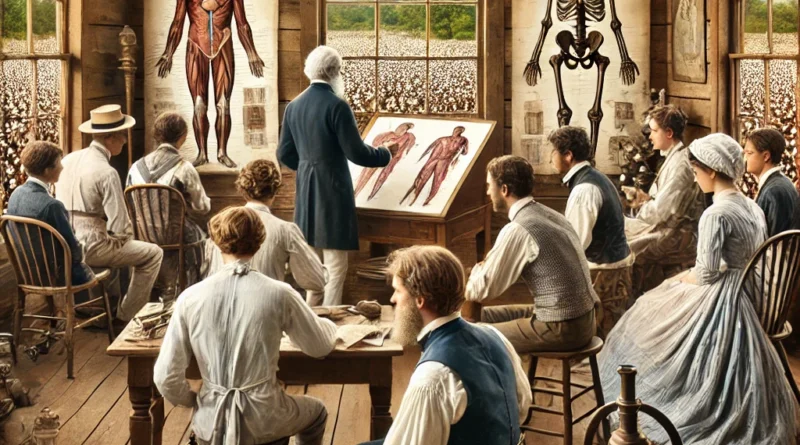Doctor Schools in the Cotton Belt from the 1800s
The Cotton Belt of the United States, spanning states like Alabama, Mississippi, Georgia, and Texas, was a region deeply rooted in agriculture and reliant on enslaved labor in the 1800s. Alongside its booming cotton economy, the region grappled with critical healthcare challenges. Doctor schools, also known as medical colleges, began emerging in the South to address the growing need for medical professionals. These schools shaped Southern medicine, but their establishment was fraught with unique regional difficulties.
A Growing Need for Medical Education in the Cotton Belt
In the 19th century, diseases like malaria, yellow fever, and dysentery ravaged the population of the Cotton Belt. The humid climate, poor sanitation, and agricultural lifestyle created an environment ripe for illness. With limited access to formal medical training, the region relied heavily on self-taught practitioners and apprenticeships. To improve healthcare outcomes, local leaders advocated for the establishment of medical colleges to train competent doctors.
The Establishment of Doctor Schools in the South
Medical schools in the Cotton Belt began to take shape in the mid-1800s. Institutions like the Medical College of Georgia (founded in 1828) and the New Orleans School of Medicine (established in 1834) became pivotal in training doctors in the region. These schools typically offered a basic curriculum that included anatomy, surgery, and the study of diseases, often delivered through lectures and limited hands-on practice.
However, resources were scarce compared to schools in the North. Dissections and cadaver studies were rare due to cultural and religious taboos, limiting practical experience. Despite these challenges, Southern medical schools provided a crucial foundation for developing healthcare systems in the region.
The Impact of the Cotton Economy on Medical Education
The Cotton Belt’s economy influenced every aspect of life, including medical education. Wealthy plantation owners often funded local medical schools, expecting doctors to prioritize the health of enslaved workers. Consequently, medical curricula in the South frequently included lectures on “slave medicine,” teaching doctors to address illnesses specific to enslaved populations.
This focus on plantation healthcare created a unique medical landscape in the South. While doctors were often trained to address tropical diseases and injuries associated with hard labor, they rarely received comprehensive education about broader public health measures.
Challenges Faced by Medical Schools in the 1800s
Doctor schools in the Cotton Belt faced several challenges:
- Limited Resources: Unlike Northern institutions, Southern schools lacked access to advanced laboratories, libraries, and teaching hospitals.
- Lack of Regulation: Medical education was unstandardized, allowing some schools to operate with little oversight, resulting in varying quality of training.
- Cultural and Religious Resistance: Many communities viewed medical practices like dissections as taboo, hindering anatomical studies.
- Economic Constraints: The reliance on agriculture meant funding was tied to the success of the cotton industry, which was subject to market fluctuations.
Legacy and Transformation of Southern Medicine
Despite their struggles, the doctor schools of the Cotton Belt laid the groundwork for modern medical education in the South. They created opportunities for aspiring physicians to gain formal training, albeit limited by the era’s social and economic constraints. Over time, advancements in science and education led to the evolution of these institutions, integrating them into a more standardized and regulated national system of medical education.
The resilience and adaptability of these early doctor schools underscore their importance in the history of American medicine. They not only addressed the immediate healthcare needs of the Cotton Belt but also contributed to the long-term development of Southern healthcare infrastructure.Doctor Schools in the Cotton Belt from the 1800s
Conclusion
Doctor schools in the Cotton Belt during the 1800s reflected the complexities of a region steeped in agriculture, economic dependency, and social inequalities. While they faced significant challenges, these schools played an essential role in training doctors who served a population vulnerable to disease and injury. Their legacy endures as a testament to the ingenuity and determination of early Southern educators and healthcare pioneers.
Suggestions for Inbound Links:
- History of Medical Education in the United States
- The Impact of Slavery on Southern Healthcare
Suggestions for Outbound Links:
- Medical College of Georgia History
- History of the New Orleans School of Medicine


Pingback: How to Assemble the JBJ Nano-Cube 10-Gallon Cabinet Stand - Allhiphop.co.uk